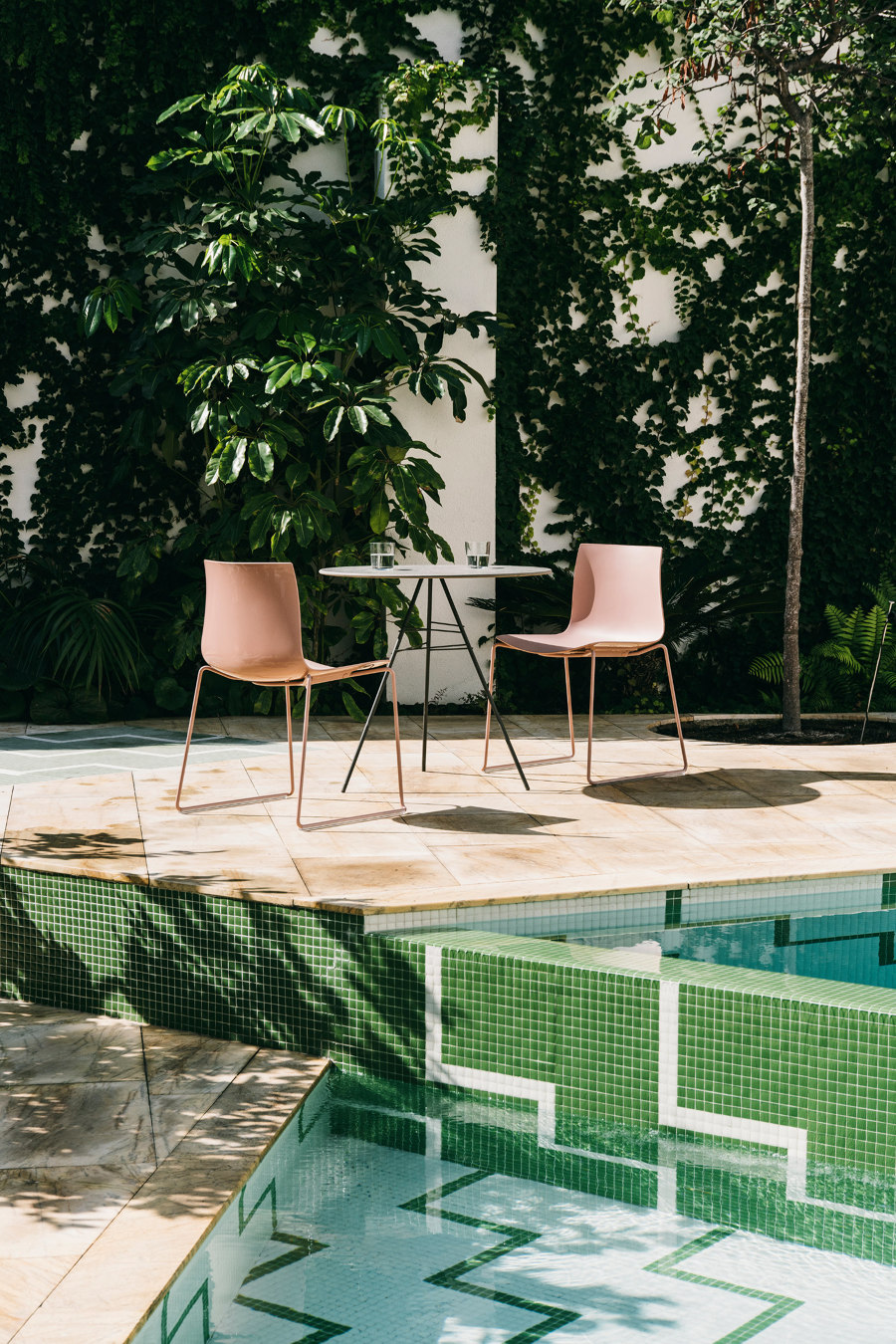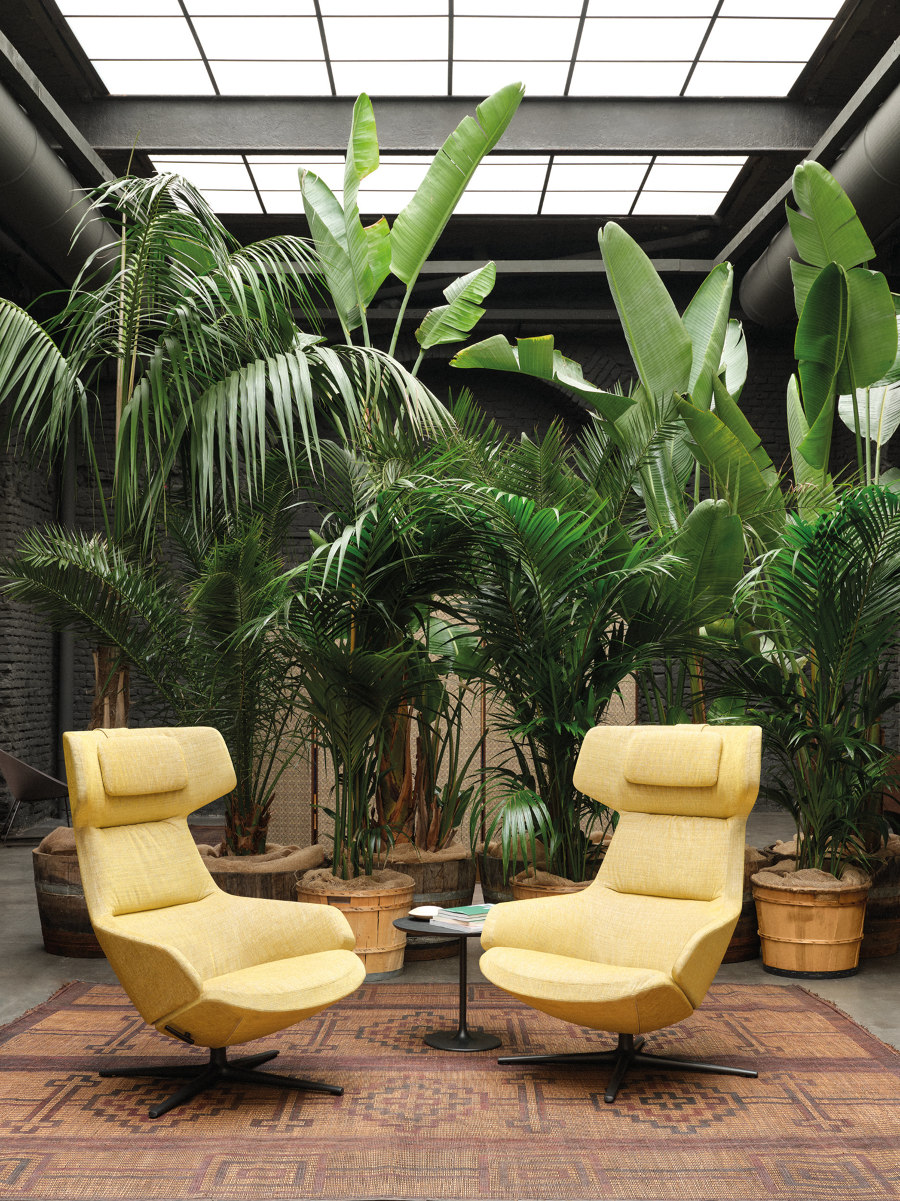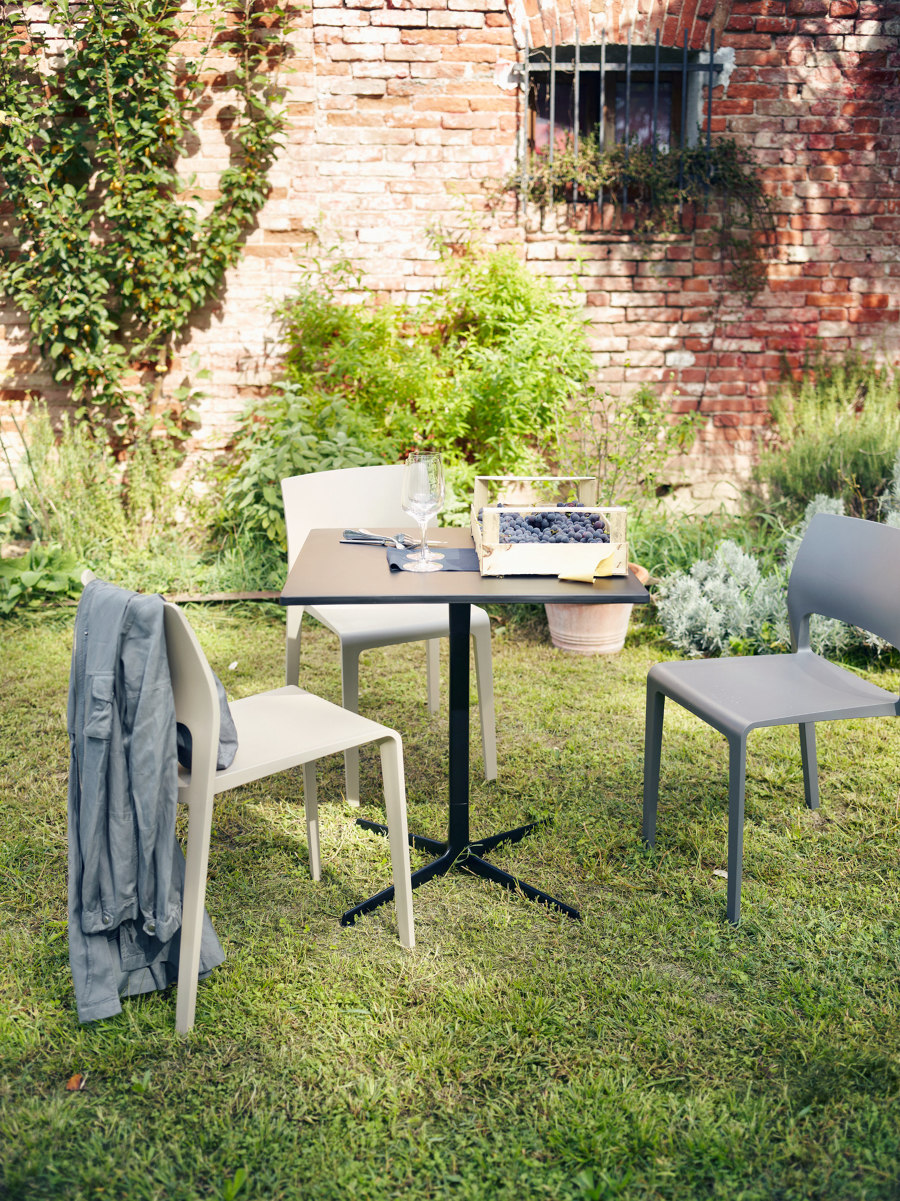Furniture with a future: Arper
Storia del Marchio di Emma Moore
22.06.21
Sustainability has long been a central tenet of the Arper philosophy, and on full display in the lightweight, recycled, recyclable Adell lounge chair.
Launched in 2020, the Adell is designed entirely from a sustainable mindset. Its seat is made from 80 per cent recycled polypropylene, and the whole can be disassembled and recycled at the end of its life. Photo: Salva Lopez

Launched in 2020, the Adell is designed entirely from a sustainable mindset. Its seat is made from 80 per cent recycled polypropylene, and the whole can be disassembled and recycled at the end of its life. Photo: Salva Lopez
×It might not set the hearts of aesthetes on fire, but environmental certifications and transparency audits are the new news for many design brands right now. Internal adjustments to production practices and model ‘updates’, once passion-killing announcements to design reviewers, are now welcome forms of proactivity in the environmental call to arms. It is the news we need to hear.
Finding a balance between industry and the essential nurture of nature is a work in progress for everyone. For Arper, the journey began 16 years ago, but increased urgency has led to an acceleration in its mission to extend the life of designs and clean up its materials and processes. Increasingly, it does this through the use of durable materials and by lightening and simplifying their products’ structure so that they travel efficiently and disassemble for effective recycling. It is also ramping up its use of sustainable materials such as FSC certified woods, and materials made from post-consumer and post-industrial waste so as to move closer towards circularity and the certifications to prove it.
The manufacture of some of Arper’s classics has been updated to reduce their carbon footprint. Juno (top) is now made from 70 per cent recycled materials and, like Catifa 46 (above), can be disassembled. Photos: Marco Covi (top), Salva Lopez (above)

The manufacture of some of Arper’s classics has been updated to reduce their carbon footprint. Juno (top) is now made from 70 per cent recycled materials and, like Catifa 46 (above), can be disassembled. Photos: Marco Covi (top), Salva Lopez (above)
×Adell, a lightweight lounge chair designed in collaboration with Lievore + Altherr Désile Park and launched last year, for example, has sustainability at its core. Suitable for use indoors and out, its pebble-like polypropylene shell is 80% post-industrial recycled plastic and all the materials (plastic and FSC-approved wooden base) are reusable, either through recycling or upcycling (it is designed without glue so that it can disassemble). Water-based paint is used on the wooden surfaces and a powder-based coat free of VOC emissions is used on the metal surfaces.
‘We draw a huge amount of energy from the interest that the younger generations have in this issue,’ says Arper's president, Claudio Feltrin. ‘Young people are informed, they behave sustainably and they take tangible action to bring about change. Increasingly, they're choosing to reuse, recycle and exchange.’
The classic Aston Club has been reworked so that its internal parts are made from post-industrial recycled plastics without the use of glue – meaning its parts can be entirely recycled or upcycled. Photo: Frederik Vercruysse

The classic Aston Club has been reworked so that its internal parts are made from post-industrial recycled plastics without the use of glue – meaning its parts can be entirely recycled or upcycled. Photo: Frederik Vercruysse
×When adjustments to materials and making methods allow for disassembly at the end of a product’s life so that it can be properly recycled, or for the lightening up of furniture piece which reduces carbon emissions, we all gain – not just those of us with a new set of chairs.
© Architonic




